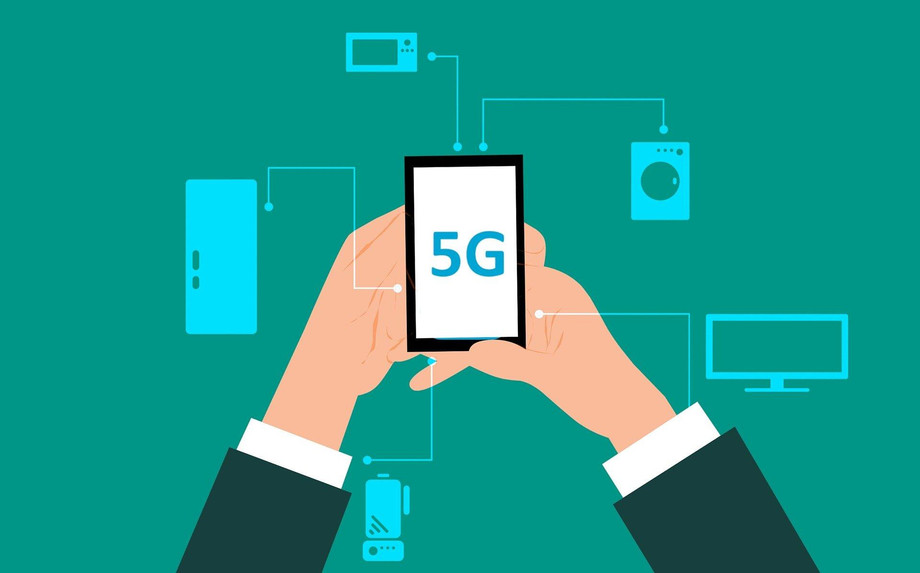It is 2020- there are roll-up TVs, voice-activated assistants, foldable smartphones, and an array of internet-connected smart devices. More technology and innovations are being introduced every day. And with more devices, arises the need for a better-connected network.
A new era of digital economy age was unleashed as wireless networks evolved from voice-only first generation to voice and text 2G, 3G-enabled basic mobile computing, and then to the latest Internet-enabled 4G where we got higher speeds and millions of apps to help us work faster and smarter.
And now, 5G is here to open the floodgates to download speed that is more than ten times what we are used to. These are crucial days for 5G. The transition to this wireless technology poses unique opportunities and challenges that must be carefully thought and addressed if the United States is to maximize the use of next-gen wireless networks and applications that rely on them.
Undoubtedly, that 5G will have a significant impact on American users- a major one from performance improvements like faster video streaming, real-time gaming, and more, thanks to the reduced latency provided by 5G networks. And decision-makers are faced with the sophisticated technologies and dynamics around this network, wherein their decisions will have an impact on long-term national competitiveness.
Hold on! Let's pause and ask a few crucial questions- What exactly is 5G, how is it different from previous technologies, where's it being used, why 5G, and how could you benefit from it?
What is 5G?
In simple words, 5G is the fifth generation of the wireless network. A new global wireless standard after 1G, 2G, 3G, and 4G networks, 5G is designed to connect virtually anyone and anything, including objects, machines, and devices.
It is meant to deliver high multi-Gbps peak data, low latency, higher reliability, huge network capacity, increased availability, and consistent user experience.
Powered by new technology, millimeter wave, or mmWave, 5G's higher performance and efficiency empower more unique user experiences and connect new industries.
How's 5G different from previous technologies?
Well, the previous generation of networks is 1G, 2G, 3G, and 4G.
First generation: Introduced in the 1980s, 1G was all about analog voice.
Second generation: 2G came up in the early 1990s and introduced the first generation digital voice technologies such as CDMA, GSM, and TDMA.
Third generation: In the early 2000s, 3G brought mobile data such as EVDO, HSPA, UMTS, and CDMA2000, considerably reducing the speeds from 200kbps to a few megabits per second (Mbps).
Fourth generation: Enter 2010s and 4G technologies like WiMAX and LTE ushered in the era of mobile broadband- the next incompatible leap forward is scaling up to hundreds of megabits and gigabit- level speeds.
All these led to 5G, which is unified and a more capable air interface. It brings three new aspects to the table: higher speeds, super reliability, and ability to connect a log more devices at once and negligible latency.
All set to expand the mobile ecosystem into new realms- 5G will impact every sector- safer transport, remote healthcare, precision agriculture, digital logistic, and more will be a reality, enabling next-gen user experiences, empowering newer deployment models and delivering new services.
Where is 5G used?
What defines the capability of 5G is that it is designed to support future service, which may be unknown today, flexibly and ably.
It can be used across three primary connected services:-
Enhanced mobile broadband: 5G will make smartphones better and usher in experiences like VR and AR with faster and uniform data rates and low cost-per-bit.
Mission-critical communications: 5G will transform industries with reliable and low latency links like remote control of infrastructure and medical procedures.
Details IoT: Seamless connection to huge embedded sensors through the ability to scale down data rates, power; providing extremely lost cost connectivity solutions.
How can businesses use 5G?
Due to high data speed and superior network reliability, 5G will tremendously impact businesses- enhancing efficiency and giving users faster access to information. Depending on the particular sector, companies can fully utilize 5G capabilities, especially industries that require high speed, low latency, and networkability that 5G provides.
All in all, 5G poses a significant opportunity for economic growth throughout several sectors in the United States and the world. The degree to which 5G network deployment services are anticipated to be integrated within the US economy's processes highlights the importance and risks inherent to relying on untrusted suppliers of the network.
What is needed at this point in digital transformation is a national 5G strategy that invests in research, supports trusted bodies, accelerates deployment, and facilitates the transition through a priority approach.
Author Bio:
Catherine Steve
Constantly reading about the technology world, Catherine enjoys writing all things tech! She monitors new tech developments, loves old tech like spinning wheels and handlooms.

